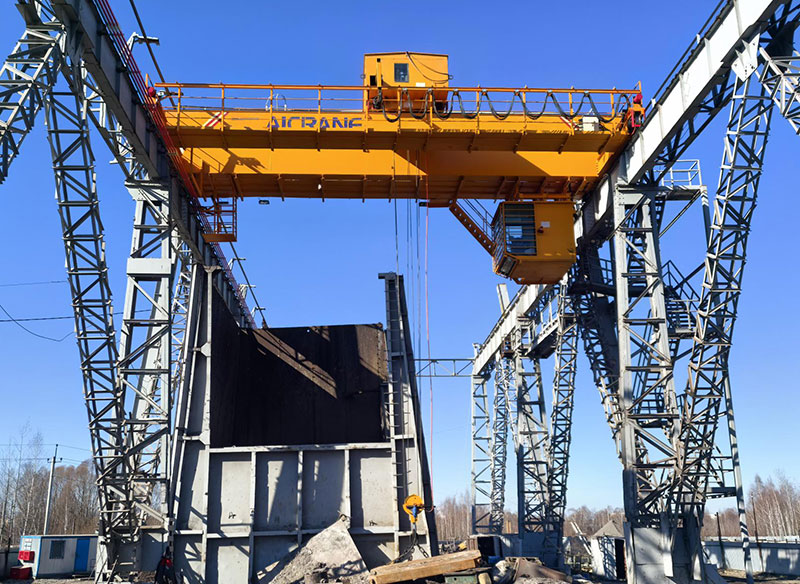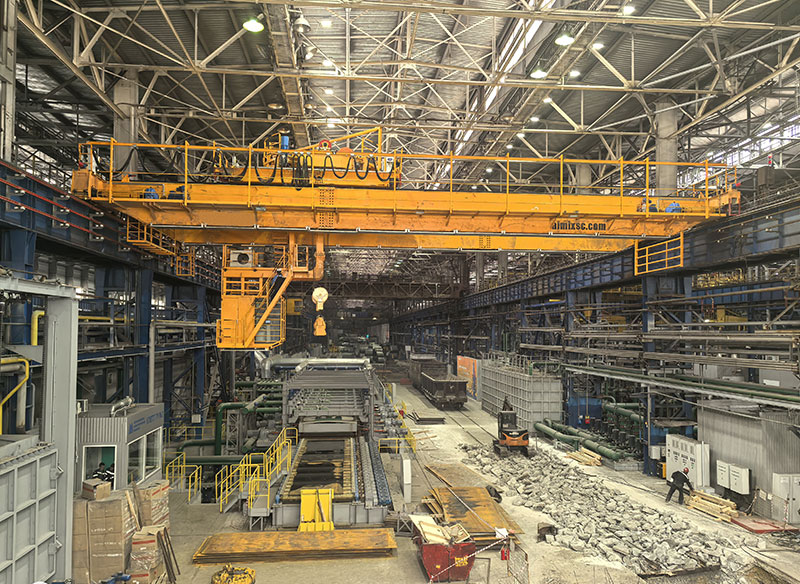When businesses consider investing in an overhead crane, price is usually one of the first factors they evaluate. However, overhead crane pricing is not determined by capacity and size alone. A major portion of the cost comes from the electrical and mechanical components that define the crane’s performance, safety, and durability. Understanding which components increase price – and why – can help buyers make informed decisions, balancing initial investment with long-term value.
This article explores the key electrical and mechanical components that drive up the overhead crane price, highlighting their role in performance and the trade-offs buyers need to consider.

1. Electrical Components Affecting Crane Price
a. Hoist Motor and Drive Systems
The hoist is the heart of any overhead crane, and the quality of the hoist motor plays a major role in price. Standard hoists are cost-effective but may lack advanced features such as variable frequency drives (VFDs), soft start mechanisms, or precise speed control.
-
Higher-cost options: Premium hoist motors equipped with VFD technology allow smoother lifting, reduced wear and tear, and greater energy efficiency. These drive up the price but significantly improve crane lifespan and performance.
-
Why it matters: Industries handling delicate or expensive materials often require precise lifting, making these advanced hoist systems worth the investment.
b. Electrical Control Systems
Modern overhead bridge cranes often feature sophisticated electrical control systems. Basic cranes may operate with simple push-button controls, but advanced models integrate wireless remote control, cabin controls, or even semi-automated operation.
-
Higher-cost options: Programmable logic controllers (PLCs), remote diagnostic capabilities, and IoT-enabled monitoring systems.
-
Impact on price: These systems enhance operational safety and efficiency but can increase upfront investment by 10–20%.
c. Power Supply Systems
The method of delivering power to the crane also influences its cost. A simple festoon system is relatively affordable, while a conductor bar or cable reel system is more expensive.
-
Festoon systems: Economical and reliable for shorter spans.
-
Conductor bars or reels: Required for high-duty applications or long spans, offering continuous power supply but at a higher cost.
d. Safety and Protection Devices
Modern cranes are often equipped with additional electrical safety devices such as overload protection systems, emergency stop circuits, anti-collision systems, and limit switches.
-
Impact on cost: While these devices add to upfront expenses, they reduce accident risks and protect both operators and equipment. Many regions require them by law, making them unavoidable costs for compliance.

2. Mechanical Components Affecting Crane Price
a. Girders and Structural Frame
The crane girder and supporting structure are the largest mechanical elements and directly impact eot crane price.
-
Single girder cranes: More economical, suitable for lighter loads.
-
Double girder cranes: More expensive due to higher material use, stronger design, and ability to accommodate greater capacity and longer spans.
-
Impact on cost: Upgrading from a single to a double girder design can increase the crane’s price by 20–40%, but it provides greater flexibility for heavy-duty applications.
b. Hoist Mechanism
Apart from the electrical hoist motor, the mechanical hoist mechanism – including the drum, rope or chain, and gear systems – affects crane cost.
-
Wire rope hoists: More expensive but offer higher durability, smoother operation, and higher capacities.
-
Chain hoists: More affordable, better for light to medium-duty operations.
-
Impact on cost: For heavy industries, the switch from chain to rope hoists can significantly increase costs but ensures safe lifting of heavier loads.
c. Gearboxes and Transmission Systems
The gearbox is a critical mechanical component that determines lifting and traveling efficiency.
-
Basic gearboxes: Lower-cost but may lack durability under high-duty cycles.
-
High-precision, hardened gearboxes: More expensive but provide smoother operation, lower noise levels, and longer service life.
-
Impact on cost: Premium gearboxes may raise crane costs by several percentage points but drastically reduce maintenance frequency.
d. End Trucks and Wheel Assemblies
The end trucks and wheels carry the crane across the runway beams. Their size, materials, and manufacturing precision all impact cost.
-
Standard wheels: Suitable for moderate use.
-
High-grade forged steel wheels with precision bearings: More expensive, but necessary for heavy-duty, continuous operation.
-
Impact on cost: Upgraded wheel assemblies prevent rail wear and downtime, justifying the higher initial price.
e. Braking Systems
Mechanical and electrical braking systems are essential for safe crane operation.
-
Basic brakes: Affordable but wear out quickly.
-
Electro-hydraulic or fail-safe brakes: More expensive but provide greater reliability and safety.
-
Impact on cost: High-quality brakes extend component lifespan and reduce the likelihood of accidents, making them a necessary expense for critical industries.
3. Integration of Electrical and Mechanical Systems
The integration of advanced electrical and mechanical systems can significantly increase the price of a girder overhead crane. For example:
-
Anti-sway technology: Requires precise sensors (electrical) combined with advanced motor control and structural rigidity (mechanical).
-
Automation and remote monitoring: Relies on both sophisticated software systems (electrical) and robust hardware (mechanical).
-
Energy-efficient cranes: Use advanced motors (electrical) and lightweight yet strong structural materials (mechanical), both of which add to costs.
In many cases, it is not a single component but the synergy of systems that raises crane prices. These integrations allow cranes to meet higher safety standards, perform specialized tasks, or operate continuously in demanding environments.
4. Long-Term Value vs. Upfront Price
While advanced electrical and mechanical components do increase overhead crane price, it is essential to consider the total cost of ownership rather than just the purchase price.
-
Reduced downtime: Premium motors, gearboxes, and brakes reduce the risk of costly breakdowns.
-
Energy efficiency: High-efficiency motors and advanced drive systems lower long-term electricity bills.
-
Safety: Additional safety devices protect operators and materials, potentially saving millions in avoided accidents.
-
Durability: High-quality mechanical components extend crane life, reducing replacement frequency.
In this sense, investing in higher-priced components can often reduce long-term operational costs and provide better returns on investment.
5. Conclusion
Overhead crane price is shaped by more than just capacity and size – it is heavily influenced by the electrical and mechanical components that power the crane and ensure safe operation. From advanced hoist motors and control systems to durable gearboxes and braking systems, each upgrade adds to the cost but also delivers measurable benefits in efficiency, safety, and reliability.
For businesses, the key is finding the right balance. Investing in the right components upfront can mean fewer repairs, lower energy bills, safer operations, and ultimately, better value for money over the crane’s service life. Instead of viewing these components as unnecessary cost drivers, they should be seen as strategic investments in performance and long-term profitability.